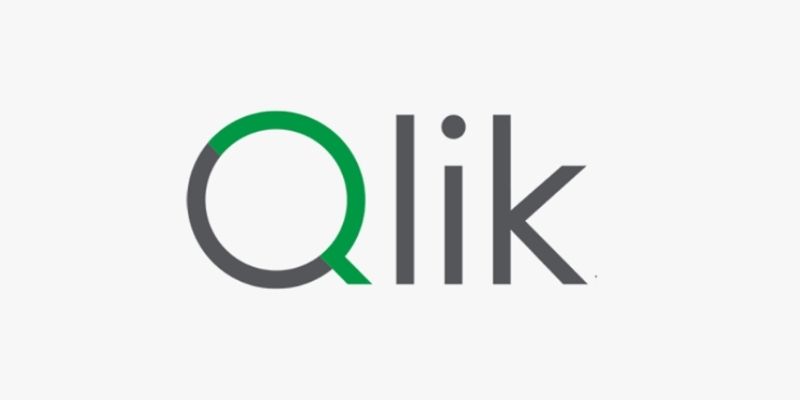Table of Contents
ToggleAre you a C-suite executive or a product leader tasked with a pivotal decision: how do you equip your Software-as-a-Service (SaaS) platform with world-class analytics without building it from scratch? The choice of an embedded analytics solution can be the difference between a high-adoption product and one that leaves users wanting more. This journey often leads you to the two heavyweights of the Business Intelligence (BI) world, forcing an intense Qlik vs Power BI comparison.
Microsoft Power BI and Qlik Sense are perennial leaders, but when embedding into a multi-tenant SaaS environment, their core technologies reveal fundamental differences that impact scalability, cost, and user experience.
Power BI, for instance, has leveraged its ecosystem dominance to secure a significant portion of the broader BI market, with some estimates placing its market share in the analytics and BI platforms segment at over 30%.
Choosing the wrong tool can lead to unpredictable costs and significant technical debt down the line. In this comprehensive guide, we will break down the features, pricing, architecture, and key differences between Power BI and Qlik to help your leadership team make an informed decision.
In this blog, we will analyze the technical merits and business implications of choosing either Qlik or Power BI for embedded analytics, compare their pricing models, examine common migration challenges, and provide a clear recommendation on which is better, Power BI or Qlik, for your specific SaaS needs.
What Is Power BI?
Microsoft Power BI is a self-service Business Intelligence platform known for its intuitive interface, deep integration with the Microsoft ecosystem, and affordability at entry levels. For SaaS companies, the primary avenue for integration is Power BI Embedded (a separate Azure service), which allows you to programmatically embed reports and dashboards into your application.
Pros
- Ecosystem Integration: Unparalleled seamless connection with the Microsoft stack (Azure, SQL Server, Excel, Teams, SharePoint). If your SaaS runs on Azure, this is a major advantage.
- Ease of Use & Adoption: Its intuitive, familiar interface means a lower learning curve, especially for users already accustomed to Microsoft Office products.
- Cost-Effectiveness (Low-Scale): With a low per-user entry cost for Power BI Pro, it is highly accessible for smaller teams and limited rollouts.
- Vast Community Support: Power BI benefits from a massive user community, providing extensive resources, tutorials, and a wide network of experienced developers.
Cons
- Scaling Challenges: As a SaaS platform scales with many users, costs can become complex and unpredictable, often requiring an upgrade to Power BI Premium or Fabric capacity, which involves capacity-based pricing.
- Data Modeling Limitations: Its relational data model is primarily query-based, which can sometimes limit the freedom of data exploration and requires a more rigid star schema design.
- Performance with Big Data: Performance can degrade with very large datasets unless complex optimization techniques like DirectQuery or aggregations are implemented, potentially leading to speed bottlenecks.
- Embedded SDKs: Historically, some users report that the Embedded SDKs offer less flexibility and a less complete self-service experience compared to competitors for deep customization.
What Is Qlik?
Qlik is a sophisticated BI and analytics platform that stands out for its unique Associative Engine. Unlike Power BI’s query-based approach, the Qlik engine loads all data into memory and maintains logical links between all data points, regardless of predefined query paths.
This proprietary technology allows users to explore data freely, enabling true self-service data discovery where “unassociated” (white space) data is as important as the associated (green) data.
Pros
- The Associative Engine: This is Qlik’s most significant advantage. It allows users to see the whole story in their data, including what is excluded by their selections, leading to deeper, unexpected insights.
- Performance and Scale: Designed to handle massive, complex datasets with superior in-memory compression, it consistently demonstrates robust performance, even under heavy, concurrent load. According to a BARC benchmark study, Qlik Cloud Analytics handled approximately 4,942 sessions per hour compared to Power BI’s 2,372 sessions per hour in a similar stress test scenario
- Flexible Architecture: Qlik offers total freedom for cloud or on-premise environments and is platform-agnostic, providing resilience and avoiding vendor lock-in to a single cloud provider.
- Superior Embedded Capabilities: Qlik Sense was built with embedded analytics in mind, offering extensive open APIs and mashup capabilities that provide greater control over the look, feel, and function of the embedded content within a third-party SaaS application.
Cons
- Higher Entry Cost: Generally, Qlik’s licensing can be more expensive and capacity-based at smaller scales compared to Power BI’s low-cost Pro tier.
- Steeper Learning Curve: The power of the scripting language and the Associative Engine means developers and analysts require more technical expertise and training to master the platform than is necessary with Power BI.
- Less Microsoft Native Integration: While Qlik connects to everything, it does not offer the same “one-click” native integration and familiar experience that Power BI provides for teams already entrenched in the Microsoft ecosystem.
- Smaller Community: While Qlik has a dedicated and strong community, it is smaller than Power BI’s massive global following, potentially making it harder to find niche support.
Power BI vs Qlik: Feature Comparison
When evaluating Power BI vs Qlik comparison for a high-traffic SaaS platform, a direct look at the core Qlik vs Power BI features is essential. The choice often boils down to whether your priority is broad accessibility and ecosystem integration (Power BI) or deep data discovery and performance at scale (Qlik).
Feature | Qlik Sense | Microsoft Power BI |
| Core Analytics Engine | Associative Engine (In-Memory) | Tabular Engine (Query-based, DAX) |
Data Discovery | Dynamic, unrestricted exploration (finds all associations) | Structured, query-dependent exploration (guided paths) |
| Embedded Analytics | Open APIs, Mashups, High Customization | Power BI Embedded (Azure Service), Dedicated SDKs |
Advanced Analytics / AI | Embedded AutoML, Generative AI (Qlik Answers) | AI Visuals requires Fabric/Azure ML for a full suite of ML |
| Scalability for Big Data | Excellent in-memory handling of large, complex datasets | Requires Premium Capacity/Fabric for high-scale performance |
Cloud Flexibility | Cloud-agnostic (SaaS, On-Premise, Private Cloud) | Microsoft Azure Cloud Ecosystem Only |
| Learning Curve | Moderate to High (Requires specialized technical knowledge) | Low to Moderate (Familiar Office/Excel interface) |
The comparison shows a clear divergence in philosophy. Qlik Sense vs Power BI often hinges on the engine: Qlik’s Associative Model encourages deep, exploratory self-service, which is crucial for end-users of a SaaS product seeking unique insights.
Power BI’s DAX/Query model, while powerful for predefined reports, requires more deliberate data modeling and can introduce complexities when users need to pivot away from the pre-authored path.
Qlik vs Power BI: Pricing Comparison
Understanding the Power BI cost vs Qlik cost is critical for C-suite decision-makers. Both tools offer subscription models, but their architectural differences mean the cost structures for embedded analytics are vastly different at scale.
Power BI Pricing
Power BI’s most common pricing tiers are:
- Power BI Pro: Starts at approximately $10 per user/month, primarily for content authors and heavy report consumers in an organization. Not designed for broad-scale embedded analytics to end-users of a SaaS product.
- Power BI Premium Per User (PPU): Offers more features but is still user-based.
- Power BI Embedded (A-SKUs): This is the embedded solution, priced based on dedicated capacity (A-SKUs) and measured in hours of use. While it avoids per-user licenses for your end-users, scaling capacity as your SaaS customer base grows can lead to unpredictable, consumption-based billing that is challenging to forecast. For large, growing SaaS applications with high concurrency, this model can quickly become expensive.
Qlik Pricing
Qlik’s model for enterprise and embedded solutions is typically capacity-based or user-based, with unlimited viewing:
- Qlik Sense Business/Standard: User-based licenses (Full/Professional users) for authors.
- Qlik Sense Enterprise: Often priced on a capacity model, similar to Power BI Embedded, but with a different cost structure, and generally offering more predictable costs at enterprise scale with capacity tiers that can include unlimited consumers. This often results in a more favorable total cost of ownership (TCO) for large-scale deployments where the cost per thousand users is lower and more stable.
The key takeaway is that Power BI has a lower cost of entry, but Qlik’s model offers greater cost predictability and typically more favorable pricing as a SaaS platform scales its user base aggressively.
Which is Better? Power BI vs Qlik Advantages for Your SaaS
The true winner in this Power BI comparison depends entirely on the strategic needs of your SaaS product:
- Choose Power BI if:
- Your team is heavily invested in Microsoft Azure and Microsoft 365. The seamless integration is an immediate win.
- Your primary goal is simple: report-based analytics for a small to mid-sized user base. The low entry cost and ease of use of Power BI Pro are compelling.
- Your users need standard, guided reporting with familiar Microsoft-style visuals.
- Choose Qlik if:
- Your core value proposition is self-service data discovery and deep, exploratory analytics. Qlik’s Associative Engine provides powerful power bi vs qlik advantages here, enabling users to find “unknown-unknowns.”
- You need to scale to thousands of external users with predictable costs. Qlik’s enterprise capacity model offers better long-term TCO.
- Your data is large, complex, and requires high-performance handling under concurrent load. Qlik’s architecture is purpose-built for this complexity.
- You require full white-labeling and deep customization of the embedded experience. Qlik’s API-first approach to embedding provides unparalleled flexibility.
Conclusion
Choosing the right embedded analytics tool is a decision that affects your SaaS platform’s performance, user satisfaction, and long-term operating costs. While Power BI presents a compelling argument with its low entry cost and seamless Microsoft ecosystem integration, Qlik Sense provides a more robust and scalable architecture for pure self-service data exploration at an enterprise level.
The superior data discovery afforded by Qlik’s Associative Engine and its more predictable capacity pricing model for high-scale embedded applications often make it the more strategically sound choice for ambitious SaaS platforms with a commitment to deep, unfiltered user insight.
Ultimately, the Power BI vs Qlik Analytics showdown is not about a universal winner, but about aligning the tool’s core strengths with your platform’s unique data complexity and growth trajectory.
To ensure you navigate the complexity of embedded analytics, from initial implementation to optimizing costs and performance on the Azure cloud, you need an expert partner. Folio3 is a certified Microsoft Solutions Partner with deep expertise in both Power BI Embedded and Qlik integration.
If you’re ready to implement a world-class, data-driven experience into your SaaS platform, connect with the experts at Folio3’s Azure services page to secure your competitive advantage today.
Frequently Asked Questions
1. Can Power BI and Qlik handle big data?
Yes, both tools can handle big data, but they do so through different architectural approaches. Power BI relies on its Premium/Fabric capacity and optimized connections (like DirectQuery) to manage large datasets, often requiring additional Azure services. Qlik Sense is inherently optimized for big data through its in-memory Associative Engine and compression technology, giving it a strong edge in performance and speed when dealing with highly complex, multi-source data models, a key part of the Qlik vs Power BI analytics debate.
2. Which tool is better for advanced analytics?
Qlik is generally considered superior for advanced analytics right out of the box. Its platform includes natively embedded Qlik AutoML™ and a cognitive engine for predictive and prescriptive analytics. While Power BI offers advanced analytics through AI Visuals and Copilot features, accessing the full spectrum of Machine Learning (ML) and complex AI requires leveraging and paying for additional Microsoft Fabric or Azure ML services.
3. Is Power BI easier to learn than Qlik?
Yes. Power BI has a significantly lower learning curve than Qlik. Its interface is familiar to anyone who uses Excel, and the drag-and-drop functionality makes report creation highly intuitive. Qlik’s power comes from its advanced scripting and the complexity of its Associative Engine, requiring more specialized training and a deeper technical understanding to master, especially for creating complex data transformations and embedded applications.




